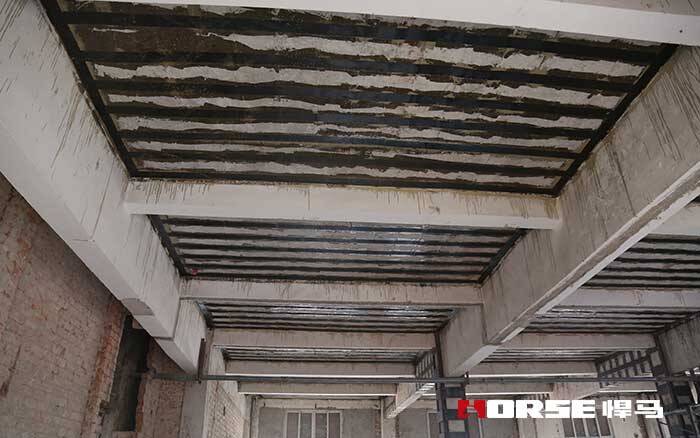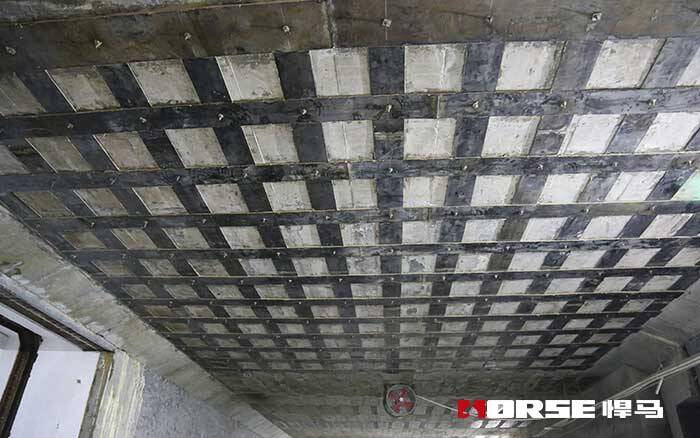Solutions
Horse Construction offers full range of structural strengthening materials with technical supports, documentation supports, products supports, project supports.
Reasons And Methods Of Floor Slba Reinforcement

In concrete structure engineering, it is often necessary to perform some operations on the floor, such as opening a floor hole. After the hole is opened, the stress conditions of the slab have changed, and the rigidity and bearing capacity of the slab will be reduced. At this time, we need to take reinforcement treatment. Similar situations often occur in the reinforcement of concrete structures. Under normal circumstances, what are the slab reinforcement methods?
Generally, there are several situations where slab reinforcement is needed:
1. Insufficient bearing capacity of the floor (usually increased load on the floor, such as adding equipment;)
2. The strength of floor slab concrete is unqualified;
3. Renovation of floor openings.

The following reinforcement methods are usually used to reinforce the floor slab:
Enlarge the section of the plate to strengthen the method. The method of increasing the slab section reinforcement is to add a post-pouring layer of reinforced concrete with a thickness of not less than 40mm on the slab surface or the slab bottom. In order to facilitate the construction, the slab surface pouring is often used to form a rigid floor and roof. If it is necessary to use the bottom of the slab to pour the laminated layer, the bottom of the slab must be chiseled and sprayed for construction. The reinforcing steel bars shall be hot-rolled steel bars, and the diameter of the stressed steel bars shall not be less than 8mm.
The floor slab is reinforced with carbon fiber cloth. The slab-bonded carbon fiber cloth reinforcement method is to stick the carbon fiber cloth along the span direction of the slab to the tensioned part of the slab bottom through structural glue, and the end must be reliably anchored. The advantage is that the carbon fiber cloth has light weight and high strength, and can be pasted in multiple layers. After reinforcement, it basically does not increase the weight of the original member, and does not affect the structural appearance. It can not only improve the structural bearing capacity but also enhance the rigidity of the structure.
The floor is pasted with steel plate method. In addition to the basic assumption of the bearing capacity of the normal section, the plate-bonded steel plate method to strengthen the flexural member plate should also meet the following requirements:
1) When considering the influence of the secondary force, the hysteresis strain of the steel plate should be determined according to the initial force of the reinforcement of the member.
2) Before reaching the ultimate state of flexural load-bearing capacity, none of the externally bonded steel plates and the concrete should be bonded and peeled.
3) After the reinforced concrete structural member is strengthened, the increase in the bending bearing capacity of its normal section shall not exceed 40%, and its shear bearing capacity shall be checked. Avoid the increase in the flexural bearing capacity, which leads to the shear failure of the member before the flexural failure.
You can find anything here you are in need of, have a trust trying on these products, you will find the big difference after that.

High strength carbon fiber reinforced polymer (CFRP) strip / laminate / plate for structural strengthening and concrete repair

Two-component epoxy modified epoxy structural strengthening adhesive for bonded steel plate to concrete

High strength, unidirectional carbon fiber sheet pre-saturated to form a carbon fiber reinforced polymer (CFRP) sheet used to strengthen structural concrete elements.